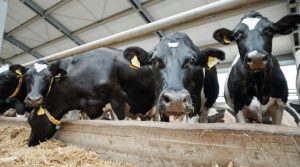
That is the conclusion of Penn State researchers, who measured nitrous oxide emissions from the corn phases of two crop rotations — a corn-soybean rotation and a dairy forage rotation — under three different management regimens. The results of the study offer clues about how dairy farmers might reduce the amount of nitrogen fertilizer they apply to corn crops, saving money and contributing less to climate change.
The results are important because although nitrous oxide accounts for just 7% of U.S. greenhouse gas emissions, it is significantly more potent than carbon dioxide or methane when it comes to driving climate change, according to Heather Karsten, associate professor of crop production/ecology in the College of Agricultural Sciences. Nitrous oxide is almost 300 times more powerful than carbon dioxide and remains in the atmosphere for more than 100 years.

























